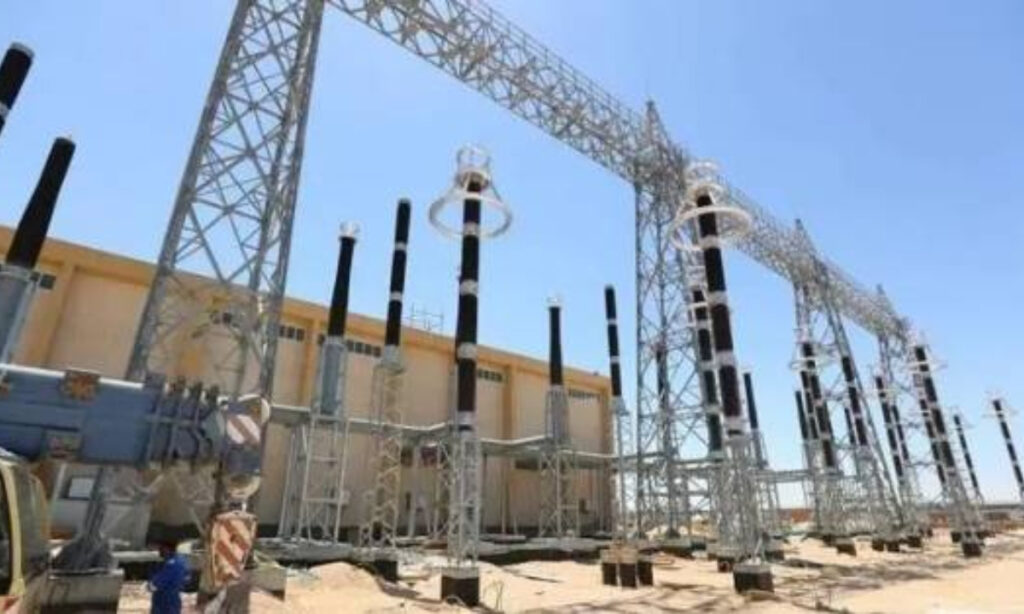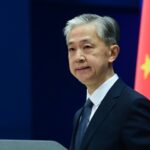In the vast desert 45 kilometers east of Cairo, a modern skyscraper is rising from the ground, which is an iconic landmark building in the central business district(CBD) of Egypt’s New Administrative Capital (NAC) built with the assistance of China State Construction Engineering Corporation (CSCEC) Egypt. A Global Times re-porter visited the new CBD and the tower, which is known as the “tallest building in Africa,” and discovered how Chinese contractors helped Egypt build its new land-mark building.
New landmark in desert
The tower sits at an imposing 385 meters high, 150 meters taller than The Leonardo in South Africa. A reporter from Al Akhbar in Egypt told the Global Times that “the tower is a symbol of the new Egypt… and it’s all made possible by our Chinese brothers.”
Chang Weicai, general manager of CSCEC Egypt, told the Global Times that the CBD project of Egypt’s NAC, signed under the joint witness of the two heads of state on the occasion of the 60th anniversary of the establishment of diplomatic relations between China and Egypt, is a model of economic and technological cooperation be-tween the two countries, which successfully synergizes Egypt’s Vision 2030 and China Belt and Road Initiative (BRI), and will promote the rapid development of Egypt’s economy and society.”
According to Egyptian media, the country has set high expectations on the construc-tion of the new capital to ease the population pressure on the capital – Cairo, im-prove transport, create jobs, attract foreign investment and enhance the image of the country.
Data shows that the CBD project of the new administrative capital covers a total area of about 600,000 square meters, with a total construction area of about 1.92 million square meters, including 10 high-grade office towers, five luxury residential towers and four large hotels. The main structure of the CBD project has been completed, and it has entered the stage of interior decoration and mechanical and electrical con-struction.
Green and advanced
The Global Times learnt that the Egyptian government initially considered cooperat-ing with Arab companies with strong financial backing in view of the project’s huge demand for funds. But in September 2015, the Egyptian side cancelled the coopera-tion, because “the project did not make any progress.” At this time, Chinese compa-nies entered the Egyptian government’s consideration.
According to local media reports, during the construction of the building, the Chi-nese company has introduced many advanced concepts, such as the underground gar-age designed with electric vehicle charging piles, to create a truly “green intelligent building.” According to the project’s chief mechanical engineer, in the CBD project, the Chinese company has integrated the concept of sustainable development from the selection of materials to the use of new technologies, which has benefited the Egyptian side.
Based on the design, the roofs of buildings in the CBD of the new administrative capital will be covered with solar panels in order to gradually increase the propor-tion of clean energy applications. In the future, 60 percent of the energy used in the city will come from renewable sources such as solar energy, with sewage utilization rate expected to reach 100 percent.
At the same time, residents will have access to a certain amount of green space, with a landscaping project in the center of the city, which is expected to be twice the size of New York’s Central Park.
The Global Times also learnt that the basalt geology of the new administrative capi-tal area is the biggest challenge in construction. Chinese technicians adopted a com-posite steel construction method, and the “iconic tower” sits on a reinforced concrete raft foundation poured on the rocky surface.
“With a total of 4,600 tons of high-strength steel supporting the full weight of the 78-story building, the foundations of this new tower are rock-solid,” Egyptian media glowingly reported.
Win-win cooperation
Egyptian President Abdel-Fattah al-Sisi once said that the construction of the new administrative capital will be a new point of economic growth, creating a large num-ber of jobs, and all-round lifting and boosting the development of the Egyptian economy.
According to Chang, CSCEC Egypt has always adhered to the strategy of localized development, pursuing mutual benefits and win-win cooperation with local compa-nies in Egypt, and committed to deepening the traditional friendship between China and Egypt.
In terms of cooperation, CSCEC Egypt and the Egyptian government have jointly built a platform for joint discussion, joint construction and resource sharing. This project is led by CSCEC, with the participation of hundreds of local companies, in-cluding material suppliers, equipment suppliers and construction companies, which truly achieved the sharing of opportunities and win-win cooperation, Chang said.
According to Egyptian media, the CBD project constructed by CSCEC has made maximum use of local resources during the construction process, cooperated with more than 300 local enterprises, and directly or indirectly helped nearly 30,000 la-borers to be employed. And the CSCEC has actively shared its mature technology, and drove the upgrading of the local industrial structure.
In January 2020, a “Luban Workshop” was established as part of the new CBD pro-ject. It is a public educational institution specialized in training Egyptian employees in construction skills.
Chang said that the inauguration of “Luban Workshop” marks a new chapter in the development of localization of CSCEC Egypt. “The workshop will help the devel-opment of Egypt’s construction industry through the training of local staff and the better use of Chinese technology.”
The “Luban Workshop” offers both practical training and theory, which can meet the needs of internship teaching, skills training and pre-employment training. The first training terms offer 12 courses in three major disciplines: civil construction, instal-lation and decoration.
Egyptian media said the Chinese company has cultivated a large number of profes-sional and technical talents for Egypt by not only “giving people fish” but also “teaching people to fish.”
An Egyptian engineer told the Global Times that from his Chinese teachers, he learned many professional skills that he had never used in Egypt before, such as ul-tra-high-rise pumped concrete, movable jib tower cranes, and steel structure weld-ing.




